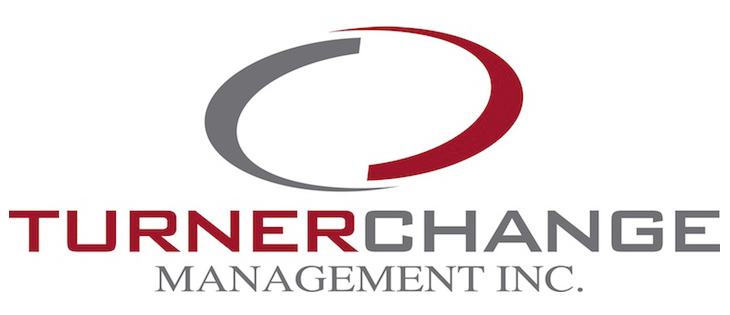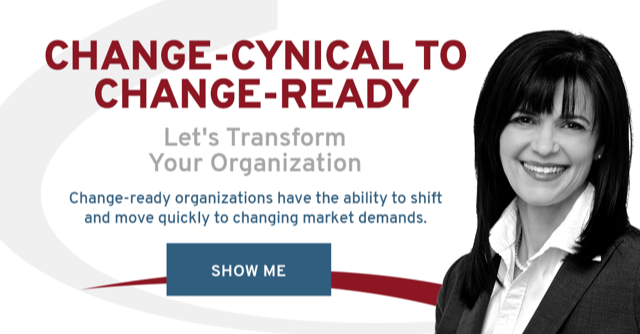What is your first response when you’re uncertain? Depending on the circumstance, it could be worrying, looking for more information, hyper-vigilance, searching for reassurance, or a combination of all four. Your response is dependent on your tolerance for uncertainty.
When you announce a change in your organization, you’ve naturally created uncertainty. You’re asking a lot of your team. You’re asking them to trust you to lead the change and that the organization can support and accomplish the desired outcome. You’re also asking them to let go of what they know and to adopt new behaviours and activities. It’s natural for them to have uncertainty. In this blog post, I explore four typical responses to uncertainty and what you can do to help your team thrive with change.
Worry
We all worry or have worrisome thoughts.[1] And we’re very good at it. It is part of our unique and natural ability to hypothesize—to create what-if scenarios as we attempt to predict what might or could happen next. Our ability to hypothesize can and has led to breakthrough innovation and knowledge.
Although a form of hypothesizing worry is different and can be a bit sneaky, that’s because we can easily get into a worry loop. In a worry loop, we think we are problem-solving, but instead, we are problem-spinning, which can leave us feeling anxious. The anxiety can leave us unable to act.
One reason for this is our negativity bias. We all have a built-in negativity bias, and it’s in the driver’s seat when we are creating all those what-if scenarios when we are in the worrying state. Therefore, we are usually focused only on the negative aspects of the situation.
It’s not easy to break free of a worry loop. Simply telling yourself, your team, or anyone not to worry is like telling someone not to breathe. It’s not helpful.
Instead, pause, acknowledge the fear and uncertainty, then focus on the present moment. One exercise we teach participants in our Stress Management for Change Course is to re-focus on the present moment and identify what they can control. Once they recognize what they can control, they can usually identify an action that breaks the cycle of worry in the present moment.
Information Seeking
Let me ask you a question. Do you like just having some of the information? Probably not. No one likes to be in an information vacuum. When we feel uncertain, we seek out information to fill any void and help reduce the uncertainty.[2]
I experienced this in the first few weeks of the pandemic when I found myself glued to news feeds, and every conversation was about Covid-19.
Despite the constant feed of information, I couldn’t seem to satisfy my need, and my stress level and sense of uncertainty were going up instead of down. One reason was the volume of information. The second was the mode and source of information. Because the information was changing daily, the information seemed contradictory, included speculation and opinion, and not always coming from a reliable source like Dr. Bonnie Henry.
 The same thing can happen during organizational change. The people affected seek out information. If there is not enough coming from reliable sources. Or it’s coming too slowly, or in the wrong format, an information void is created. To fill the void, they will seek information from any source regardless of its reliability or accuracy, raising their stress and uncertainty.
The same thing can happen during organizational change. The people affected seek out information. If there is not enough coming from reliable sources. Or it’s coming too slowly, or in the wrong format, an information void is created. To fill the void, they will seek information from any source regardless of its reliability or accuracy, raising their stress and uncertainty.
Creating a network of people throughout the organization who actively communicate can help. It enables people to tap into and receive timely, accurate, and helpful information from reliable sources. It’s almost impossible in today’s environment to rely solely on cascading information through formal channels. There are too many ways for people to get information. Designing and creating a network for communication enables you to tap into the natural order of the organization and create a healthy grapevine to support your change efforts.
That’s what I did. Initially, I turned off all my news feeds. Then created a curated communication network that would keep me informed, avoided speculation, and provide helpful information. I could tap into it as needed.
Hyper-vigilance
Hyper-vigilant is the state of being on high alert. You are more sensitive to your environment and the people around you. There are degrees of hyper-vigilance, and in this post, I am not talking about the level that needs professional help.
I have seen levels of hyper-vigilance demonstrated in different types of large and small change initiatives. And heard leaders describe people as sensitive, and they are. When we are in hyper-vigilance, we have a heightened sensitivity and awareness of the non-verbal, verbal, and environmental cues.
To our brain, hyper-vigilance is a way of keeping us safe. It’s a primary survival mechanism. It’s what keeps you alert when in an unfamiliar environment. It can also be exhausting and cause us to create threats where there aren’t any. Because we are more attuned to subtle changes, we connect dots that are not meant to be connected. As a result, we make assumptions and draw conclusions that can heighten our stress response.
Our emotional response can also be closer to the surface. I describe it as wearing our emotions on our sleeves. It just takes what seems to you, the leader, to be a small event to trigger a response that appears more significant than the situation warrants. It’s like blowing the feathers off a dandelion.
The first step in dealing with hyper-vigilance is to stop labelling people as too sensitive and acknowledge it can be part of a normal reaction to uncertainty.
Balancing what’s not changing with what is changing will also help give stability during the change process. A clearly defined intended outcome and active involvement in the planning process also helps. Developing your skill and confidence to lead within the emotional element of change will also help you navigate and reduce uncertainty.
Lastly, it’s helpful to remember how much you communicate even when you are not saying anything.
Searching for Reassurance
Everyone needs reassurance at some point, especially during change. It may be the reassurance that we have the skills and capability to adopt the new activities and behaviours. Or about our role and responsibility or how the change may affect other areas of our lives.
Some people are better able to reassure themselves. They approach events from an “everything always works out mentality.” Others need more external reassurance. They ask more questions or the same question multiple different times to different people.
Early in my career, I worked with one change manager who needed regular reassurance. She was new to the role and would ask the same question in multiple different ways. She listened carefully, and if my response appeared to be different, she would remind me of what I said previously. Initially, it was frustrating. But once I recognized she needed it, I was able to respond with empathy. Over time her confidence grew, and she needed less reassurance.
It’s easy when wanting to reassure people to try and put a positive spin on the issue. Yes, helping people see the benefits is helpful, but too much can lead to toxic positivity. The reassurance needs to be honest, not making promises that you can’t keep. Providing context and helping people see how things fit together to see how short-term activities fit with long-term goals can also help.
Increasing Tolerance for Uncertainty
The good news is we can increase our tolerance for uncertainty. By recognizing the natural response that people have to uncertainty, you begin to create a readiness mindset. You can recognize that they’re not resistant, just unsure.
Over time and with a readiness mindset, you can help people increase their tolerance for uncertainty which will decrease their stress and help them and your organization thrive because of change.



